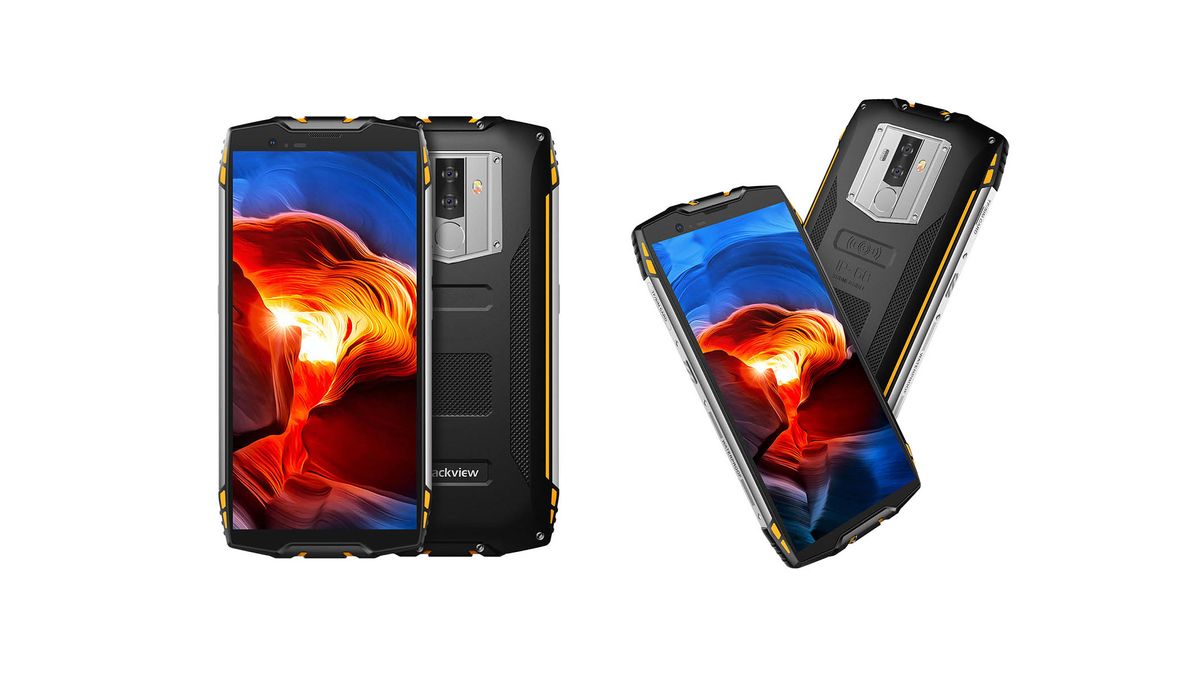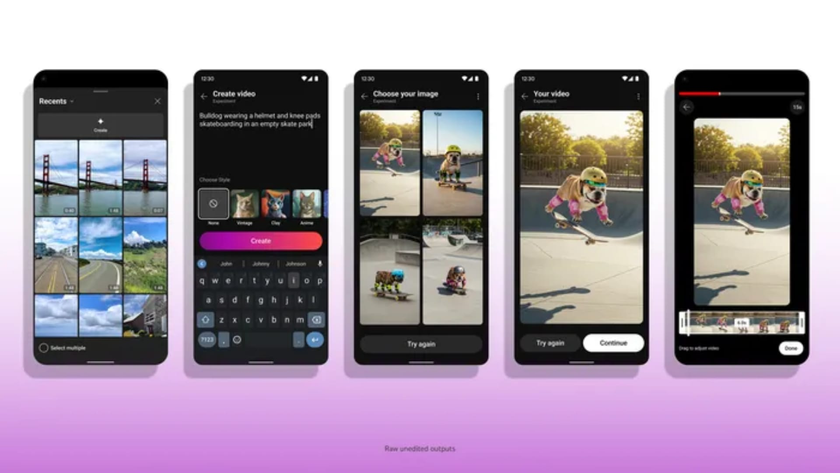TechRadar Verdict
This smartphone boasts an affordable go-anywhere design that has more plus points than negatives.
Pros
- +
Inexpensive
- +
IP68 rated and tough
- +
Good camera
- +
Dual SIM support
Cons
- -
Battery life is mediocre
- -
CPU is slow
Why you can trust TechRadar
We’re always amused by the marketing content created by phone makers, especially when it comes from Chinese manufacturers.
On the web page promoting the Blackview BV6800 Pro, you’ll find graphics partially sourced from the 2014 movie, Fury, with a surly Brad Pitt surrounded by tanks and explosions.
Online Chinese retailer, Gearbest, sells the Blackview BV6800 Pro for $219 (around £175) at the time of writing. Note that, while this price includes delivery, it is exclusive of any taxes that may be levied by HMRC or the courier companies on behalf of the vendor. Want to buy tech from online Chinese retailers? Read this first.
We are not sure the company has the rights to use the actor, or how this relates to phone technology – given the truly abysmal 4G reception in the Ardennes forests of Wallonia in late 1944 and early 1945 – but that’s how marketing imagined this handset.
The phone, in comparison, is much less Hollywood, and that’s mostly a good thing.
Looking at the specification of the BV6800 Pro on paper, it seems like a bargain for the $219 (around £170) that you can buy this handset for online. The phone is generally available in both Europe and the US, although it is worth noting that there are specific models for each of these regions.
Design and spec
In the world of consumer electronics, success can be measured by the volume of shipped product, and for Blackview the gold standard was set by a rugged design launched in 2016: the BV6000.
The manufacturer shipped millions of those, and like any successful movie, this has naturally led to a sequel – the new BV6800 Pro.
Two years is a Pliocene period in smartphone timescales, and therefore the new design is a major revamp over the old BV6000, with almost every aspect having been enhanced or tweaked.
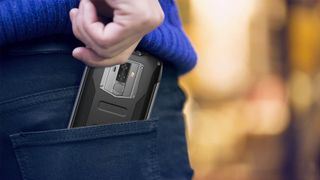
The most obvious of these changes is that the BV6000 had a 4.7-inch 1080p display, whereas the BV6800 Pro is a whole inch bigger and has a 2,160 x 1,080 resolution (FHD+) screen.
That change elevates this phone into more a phablet, although Blackview didn’t include a stylus or any of the other classic phablet accessories here.
Internally the BV6800 Pro packs 4GB of RAM, 64GB of flash storage, an octa-core MediaTek MT6750T processor and ARM Mali-T860MP2 GPU.
Here are the full specs of the Blackview BV6800 Pro:
CPU: MediaTek MT6750T octa-core 1.5GHz
GPU: ARM Mali-T860MP2
RAM: 4GB
Storage: 64GB
Screen Size: 5.7-inch
Resolution: 2160 x 1080
Weight: 170g
Dimensions: 162 x 81 x 14.8mm
Rear Camera: 16MP + 16MP
Front Camera: 8MP
OS: Android 8.0 Oreo
Battery: 6580Ah
This is the same hardware that a wide number of low-priced phones have used including the Asus ZenFone Max Plus, Sharp B10, Doogee S55, Cubot P20 and ZTE Blade A610 Plus.
All this hardware, plus the sensors and a 6580 mAh battery, are enclosed in a reasonably thin (14.8mm) polycarbonate case that has soft rubberized corners and aluminum sides.
Most of the case is black and depending on your preference at purchase it can have either yellow or green highlights.
The fingerprint reader is on the back just below the rear cameras. On the right side is a power button and volume rocker, and the left side sports the SIM card access, and an extra button that we assumed was for the camera.
There are two versions of this device, one for global consumption and another tweaked for the EU market. They contain almost identical hardware apart from the bands covered – the frequency ranges for 3G and LTE are slightly different.
Included with the handset are some conventional 3.5mm jack headphones and the adapter for them to use the USB Type-C port, along with a power supply and Type-C cable, and an adapter that allows you to use the older microUSB B charging.
However, you don’t need to plug anything in to charge the BV6800 Pro if you have wireless charging, as the phone supports that too.
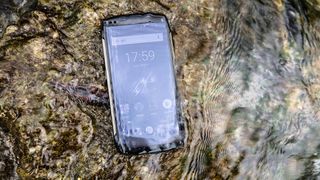
Features
As we’ve already mentioned a good number of features, let’s talk more about what the BV6800 Pro has that’s a bit different, and also those things that were left out.
It might be standard for Chinese phones, but most European-targeted phones don’t have dual SIM capability like the BV6800 Pro. If you use a microSD card to expand the storage by up to 128GB, then you sacrifice one of the two Nano SIM slots.
The sensor selection includes the following: a fingerprint sensor, proximity sensor, and ambient light sensor, along with an accelerometer, compass and gyroscope. The handset doesn’t have a barometric sensor or a Coulometer, but the NFC capability has been enhanced to include the Chinese enhanced version, Hotknot.
We mentioned the extra button previously, and digging into the settings, we discovered that this is a ‘multifunction button’ that can be programmed to perform a selection of actions.
Short, long or double clicks can each do something different, although the action choices are rather limited. And, while you can launch the photo app with this, oddly you can’t assign the function of taking a photo to the button. Given that initiating a sound recording is one of the choices, why isn’t snapping a photo?
But all of these considerations are peripheral to the real reason you might consider buying this phone, and that’s to withstand the abuse you might carelessly subject it to.
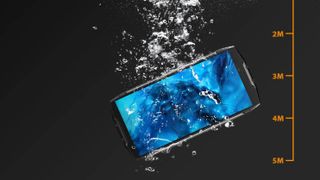
The BV6800 Pro is yet another phone that is sold as waterproof, as defined by the IP68 certification. To be clear, IP68 doesn’t mean a phone is 100% waterproof or dust protected, but the device should be able to withstand total immersion in water at a depth of 1.5m for 30 minutes.
The depth is critical, because beyond 1.5m deep, water will get into the phone much more rapidly, and as the handset doesn’t float, that’s guaranteed if it ends up in water deeper than 1.5m.
In the promotional material, it is claimed that the phone can go well beyond these tests, handling an impressive 5m submersion for an hour – and it can also cope with a drop from 3m.
We take the view that all IP68 certification does is remove the paranoia associated with taking a phone to the beach, or somewhere where it might reasonably get splashed. It isn’t meant to handle much more than that, and it isn’t a point of failure that you need to explore.
We should point out that, despite it being repeated many times elsewhere, the US military doesn’t offer a certification service for phone makers, and therefore having passed some of the tests outlined in the MIL-STD-810 document isn’t ‘certification’ or anything remotely close to that.
Mark is an expert on 3D printers, drones and phones. He also covers storage, including SSDs, NAS drives and portable hard drives. He started writing in 1986 and has contributed to MicroMart, PC Format, 3D World, among others.
